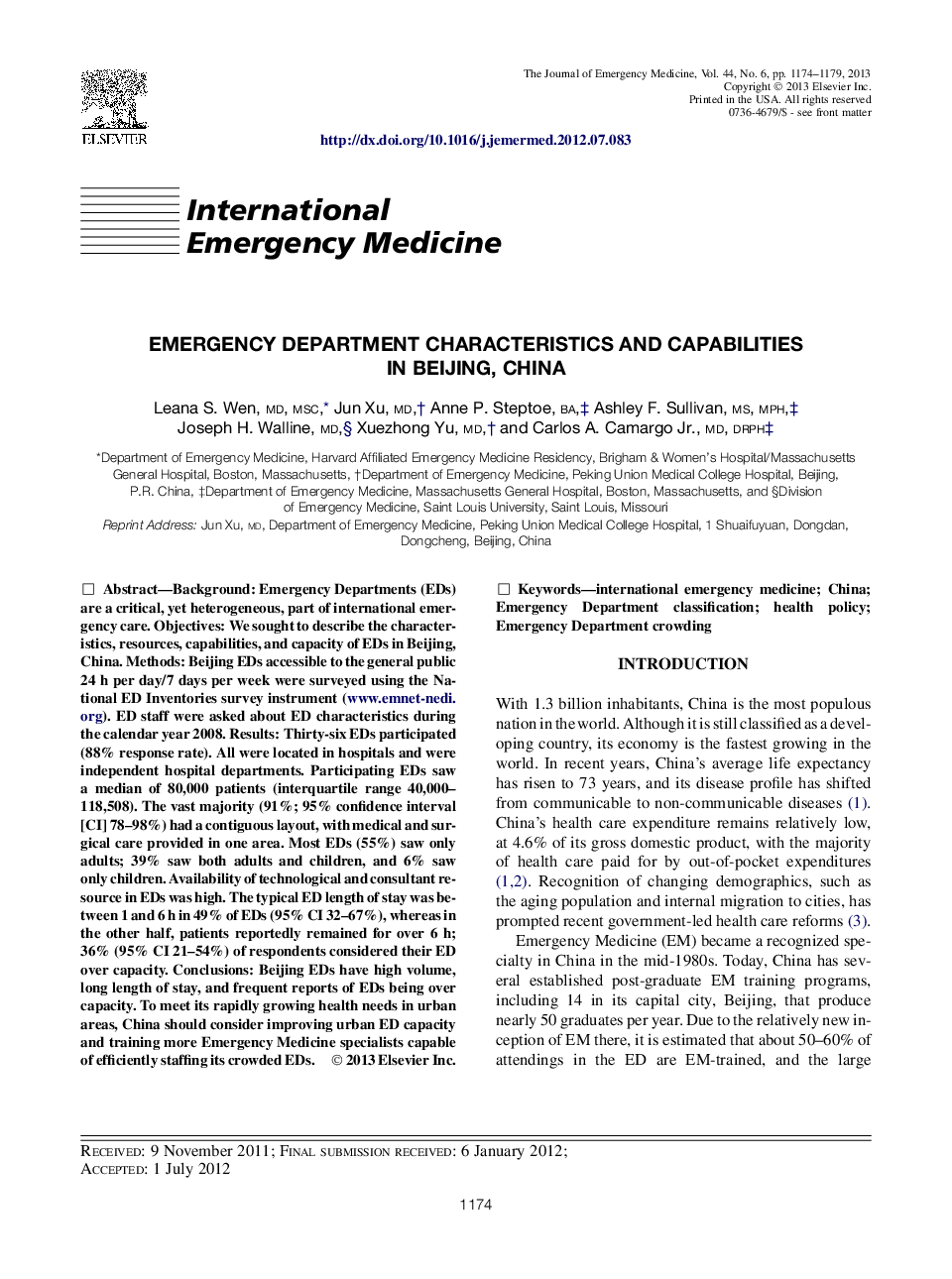| Article ID | Journal | Published Year | Pages | File Type |
|---|---|---|---|---|
| 6085353 | The Journal of Emergency Medicine | 2013 | 10 Pages |
BackgroundEmergency Departments (EDs) are a critical, yet heterogeneous, part of international emergency care.ObjectivesWe sought to describe the characteristics, resources, capabilities, and capacity of EDs in Beijing, China.MethodsBeijing EDs accessible to the general public 24 h per day/7 days per week were surveyed using the National ED Inventories survey instrument (www.emnet-nedi.org). ED staff were asked about ED characteristics during the calendar year 2008.ResultsThirty-six EDs participated (88% response rate). All were located in hospitals and were independent hospital departments. Participating EDs saw a median of 80,000 patients (interquartile range 40,000-118,508). The vast majority (91%; 95% confidence interval [CI] 78-98%) had a contiguous layout, with medical and surgical care provided in one area. Most EDs (55%) saw only adults; 39% saw both adults and children, and 6% saw only children. Availability of technological and consultant resource in EDs was high. The typical ED length of stay was between 1 and 6 h in 49% of EDs (95% CI 32-67%), whereas in the other half, patients reportedly remained for over 6 h; 36% (95% CI 21-54%) of respondents considered their ED over capacity.ConclusionsBeijing EDs have high volume, long length of stay, and frequent reports of EDs being over capacity. To meet its rapidly growing health needs in urban areas, China should consider improving urban ED capacity and training more Emergency Medicine specialists capable of efficiently staffing its crowded EDs.
